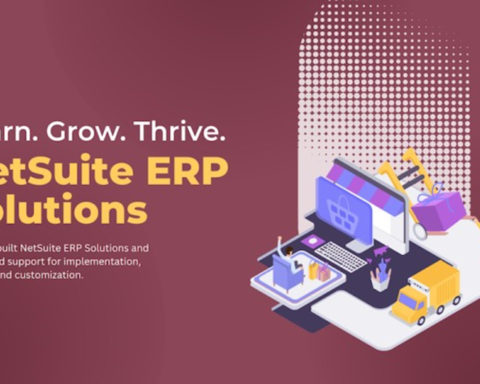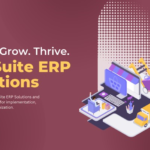A NetSuite implementation promises clear data, smoother work, and quicker close cycles. That upside often fades when small gaps in the project turn into real trouble. The notes below highlight the missteps our consultants meet most weeks and show direct tactics that keep the system on track.
NetSuite Roll-Out Risk
ERP touches sales, finance, inventory, and service. One wrong field in the item master can stall an order. A missed tax rule can delay an invoice. Morale dips next, followed by client frustration. A well-kept plan with strong ownership guards both money and trust.
Fuzzy Requirements
Teams rush into the build with loose notes. Someone states, “Standard NetSuite can handle that,” while another hopes custom code will cover edge cases. Front-line users stay quiet until late rounds, which forces rework.
Fix in Plain Steps
- Hold live discovery sessions with each group.
- List every task, pain point, and needed metric.
- Rank items with MoSCoW—Must, Should, Could, Won’t.
- Freeze the list in a signed doc. That page remains the single source of truth.
Custom Overload
NetSuite allows new fields, scripts, and workflows for almost any twist in process. Each tweak feels harmless; over time upgrades grow risky and support hours rise.
Fix in Plain Steps
- Ask if a tweak protects revenue, audit rules, or growth. If the link feels weak, drop it.
- Use native fields and saved searches first.
- When code still feels right, follow SuiteScript best practice and log each object in a shared repo.
Dirty Data
Legacy tools hold years of clients, items, and vendors in mixed formats. A quick export on the eve of cut-over leaves gaps, duplicates, or bad dates.
Fix in Plain Steps
- Map each data source early.
- Clean data outside NetSuite—purge dead vendors, fix zip codes, align dates.
- Load a pilot batch; let users scan live records.
- Lock edits in the legacy tool one week before go-live.
Missing User Voices
A steering group meets in a boardroom while clerks, buyers, and reps keep daily tasks moving. Those staff members see the new screens for the first time at launch, feel lost, and blame the system.
Fix in Plain Steps
- Select one power user from each area.
- Invite that person to every design walk and test run.
- Grant veto rights on change requests.
- Offer a reward—gift cards, team lunch, or extra time off—once go-live closes.
Scope Drift
During a sprint, someone asks for one more field, later a new dashboard, then another report. The backlog doubles, cost jumps, and the date slips.
Fix in Plain Steps
- Keep a single change log in plain view. Side emails end here.
- Mark impact for money, effort, and date.
- Review items in a weekly call. Swap needs rather than stack them.
Thin Test Cycles
Time runs short. The team trusts that scripts compile and reports sum. They skip end-to-end trials; errors surface in live mode.
Fix in Plain Steps
- Write flows that match daily work: quote-to-cash, procure-to-pay, hire-to-pay.
- Assign clear owners and due dates.
- Log every defect in one tracker, fix, then retest.
- Launch only after all high-severity items close.
Weak User Lessons
An hours-long webinar tries to cover every module. Viewers half-listen and forget tips within two days. Support tickets flood in once the switch flips.
Fix in Plain Steps
- Break lessons by role. Ten-minute clips beat marathon sessions.
- Hand out quick guides—one page per task saves hours.
- Provide sandbox access so users can click without fear.
- Track course finish rates and link access to completion if required.
Light Post-Launch Help
The project team wraps up on Friday, then shifts to new work on Monday. Edge cases pop up yet no one owns fixes. Users drift back to spreadsheets.
Fix in Plain Steps
- Keep a hyper-care squad for four weeks.
- Host daily stand-ups to rank tickets.
- Drop to weekly check-ins once ticket count falls.
- Note root cause for each issue and grow the help base.
Why Choose SuiteRep for NetSuite Implementation?
Clients want fewer hiccups, faster value, and clear cost. As an experienced NetSuite partner, SuiteRep ticks those boxes with a model built on real-world proof.
Industry Focus
Our NetSuite consultants arrive with playbooks for SaaS, retail, wholesale, and light manufacturing. Shorter discovery and sharper choices follow.
Fixed-Scope Blueprint
We lock needs, cost, and date in a signed roadmap. Surprises vanish.
Lean Code Rule
Custom objects stay under a firm ratio. Upgrades move with ease and support bills stay low.
Data Steward Role
A data owner maps, cleans, loads, and signs off on samples inside the first month.
User-First Build
Power users stand at each workshop and test run. Their approval drives adoption.
Smart Learning Kit
Short videos, printable quick guides, and sandbox drills turn new users into daily pros.
Hyper-Care Promise
A SuiteRep success manager sits with you through the first close and first stock cycle. Ticket replies land inside two hours.
Clear Metrics
Live dashboards track budget, ticket count, and defect age. Progress stays in plain sight.
Key Points to Carry Forward
A smooth NetSuite launch rests on clear requirements, modest custom work, early data cleanup, full user input, tight scope control, strong tests, sharp lessons, and solid post-launch help. SuiteRep lives these habits every day. Follow the steps above, lean on a partner who works this way, and your ERP will deliver the value you expect without drama.
Read More Gorod










